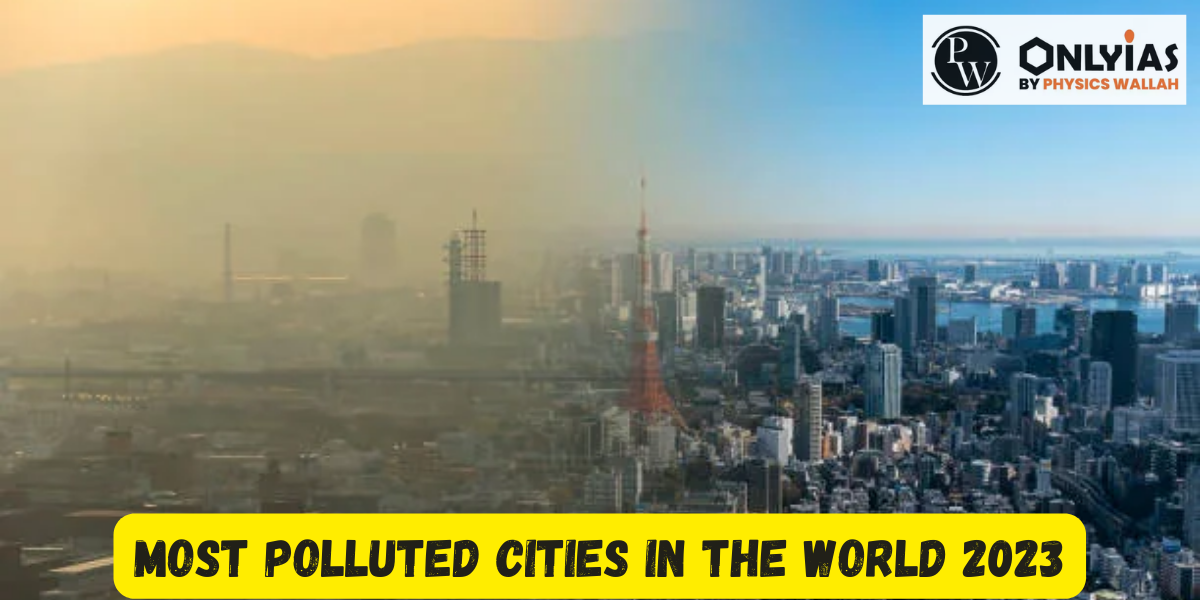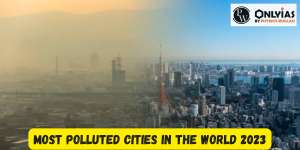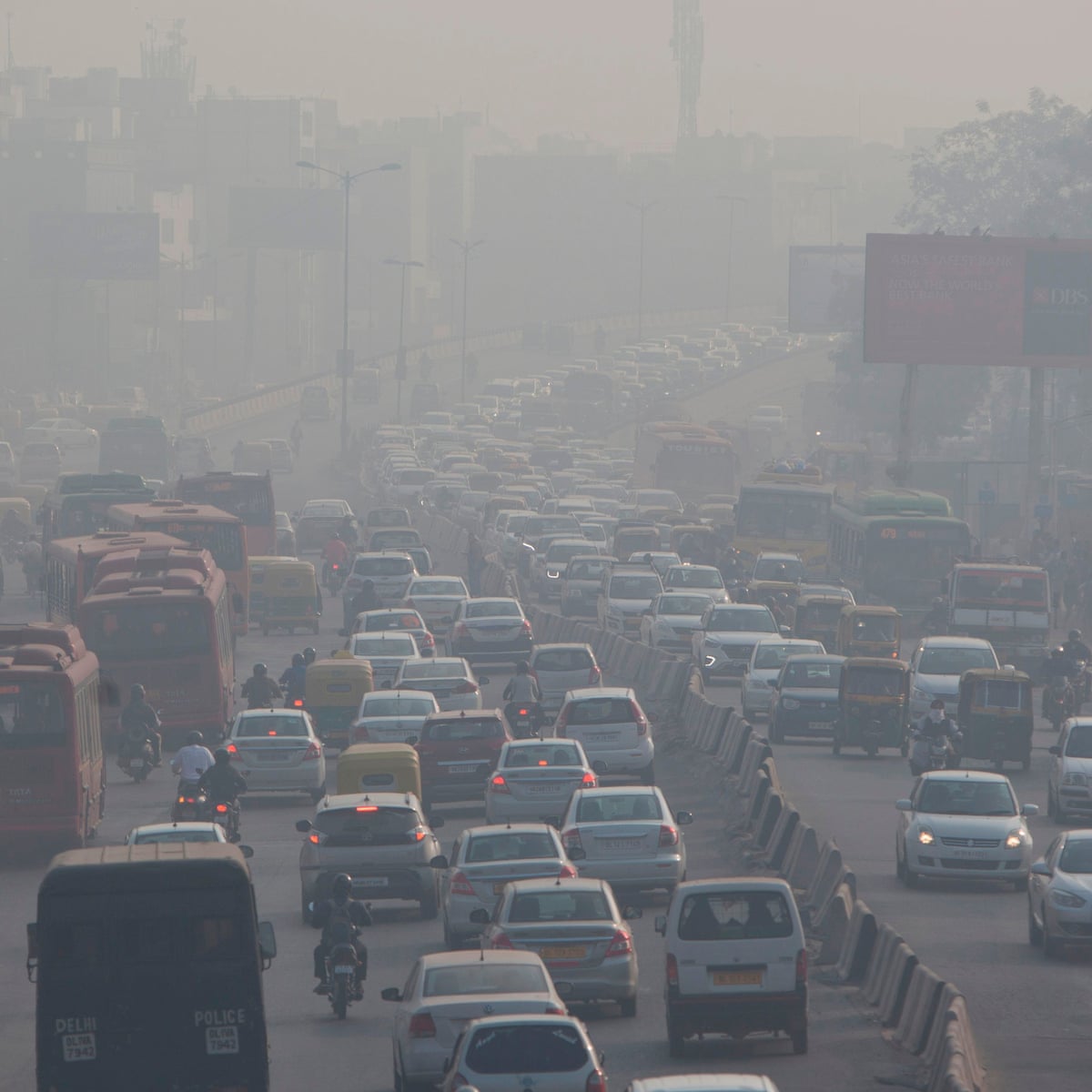
Most Polluted Cities in the World: Air pollution stands as a prominent contributor to global mortality. However, the inquiry persists: which cities and nations bear the highest pollution burden? Delving into the analysis, Smart Air meticulously scrutinized air quality data from 2022 encompassing 529 prominent cities across 88 countries. This comprehensive evaluation forms the foundation for the 2023 revised hierarchy of the “20 Most Polluted Cities in the World.”

Most Polluted Cities in the World: For the fourth consecutive year, Delhi has maintained its position as the world’s most polluted city. The global air quality report, conducted by the state of global air (SoGA) initiative, has announced the cities with the highest exposure to poor air quality. This SoGA publication offers insights into the levels of pollution in various cities across the globe.
These reports are accessible to the public and serve as valuable resources for practitioners, citizens, journalists, policymakers, and scientists to take necessary measures in combatting the adverse impacts of pollution. The study also predicts that by 2050, around 68 percent of the global population will reside in urban areas and be exposed to urban air. This rapid urbanization is particularly prominent in lower and middle-income countries, resulting in significant health risks due to heightened emissions.
Most Polluted Cities in the World: Urban centers are magnets for populations seeking better lifestyles and employment opportunities. However, the escalating urbanization contributes to high levels of air pollution, which has severe repercussions on public health. It leads to the prevalence of diseases such as cardiovascular issues, respiratory disorders, type 2 diabetes, and respiratory infections. The consequences of these diseases contribute to premature mortality rates. The World Health Organization (WHO) has established Air Quality Guidelines that recommend an outdoor fine particle pollution concentration of 5 micrograms per cubic meter for healthy air. However, these WHO guidelines are not matched by the air quality standards in many bustling global cities.
The report draws its data from a comprehensive study of air pollution exposures and their corresponding health impacts. Information was collected from 7,000 cities over the span of 2010 to 2019. The analysis encompasses two main categories of air pollutants: ambient fine particulate matter (PM 2.5) and nitrogen dioxide (NO2), a gaseous pollutant released primarily through traffic-related pollution.
Most Polluted Cities in the World: Here is a list of the top 20 most polluted cities in the world, based on the report:
| Rank | City | Country |
|---|---|---|
| 10 | Accra | Ghana |
| 18 | Bamako | Mali |
| 9 | Beijing | China |
| 13 | Abidjan | Côte d’Ivoire |
| 19 | Cairo | Egypt |
| 16 | Chengdu | China |
| 20 | Dushanbe | Tajikistan |
| 5 | Dhaka | Bangladesh |
| 3 | Kano | Nigeria |
| 2 | Karachi | Pakistan |
| 4 | Kolkata | India |
| 7 | Lagos | Nigeria |
| 14 | Mumbai | India |
| 6 | Jakarta | Indonesia |
| 8 | Lima | Peru |
| 1 | Delhi | India |
| 15 | Shanghai | China |
| 12 | Singapore | Singapore |
| 17 | Tashkent | Uzbekistan |
| 11 | Kinshasa | Democratic Republic of Congo |
The ‘World Air Quality Report’ released by Swiss firm IQAir in 2022 unveiled India’s concerning position as the eighth most polluted country globally. This marked a decline from its fifth-place ranking in the previous year. The ranking was determined based on the concentration of PM 2.5, a pollutant closely monitored by scientific and health communities.
Drawing data from 131 countries and over 30,000 ground-based monitors, both governmental and non-governmental, the report emphasized India’s significant presence in the list. The extensive coverage spanned over 7,300 cities, a remarkable increase from the report’s coverage in 2017, which included fewer than 2,200 cities. The economic impact of air pollution in India is estimated at $150 billion. The transportation sector contributes to 20-35 per cent of PM 2.5 pollution, while sources such as industrial units, coal-fired power plants, and biomass burning also play a role.
Lahore in Pakistan and Hotan in China took the unenviable positions of the top two most-polluted cities. Rajasthan’s Bhiwadi and Delhi followed closely, securing the fourth place. Delhi, with a PM 2.5 level of 92.6 micrograms, nearly 20 times the safe limit, underlines the severity of the pollution crisis.
The report highlighted the dominance of Indian cities within the ranks of most polluted urban centers. Six Indian cities ranked in the top 10, with 14 in the top 20 and a staggering 65 in the top 100, a notable increase from the previous year’s 61. Even Delhi and New Delhi found themselves within the top 10, albeit following a new classification.
This year, the report differentiated between ‘greater’ Delhi and New Delhi as distinct entities. While both secured places within the top 10, New Delhi clinched the second spot, leaving the dubious title of the world’s most polluted capital to Chad’s N’Djamena. The difference in pollution levels between New Delhi and N’Djamena is minuscule, with the latter being a city with a population of less than a million.
Neighboring towns of Delhi, including Gurugram, Noida, Ghaziabad, and Faridabad, witnessed a decline in pollution levels. However, despite this drop, the actual pollution levels remain alarmingly high. Health risks stemming from such elevated pollution levels disproportionately affect vulnerable groups, including children, the elderly, and individuals with existing health conditions.
Agra, home to the iconic Taj Mahal, experienced a remarkable decline of 55 per cent in pollution levels. However, on the flip side, as many as 38 cities and towns reported increased pollution compared to previous years.
A significant proportion of the most-polluted cities are concentrated in South Asia, with 72 out of the top hundred cities hailing from the region. Although India stands as a prominent contributor, countries like Pakistan and Bangladesh have higher ranks among the world’s most polluted nations. The report highlighted the shared ‘air sheds,’ where pollutants from one area influence another. South Asia’s status as an epicenter of air pollution prompted the World Bank to analyze the costs of pollution reduction. The report emphasized that collaboration among these nations could significantly reduce costs and the human toll of air pollution, which currently stands at over two million premature deaths in the region.

As of the latest available data, the 10 most polluted cities in the world in terms of high levels of PM2.5 (particulate matter with a diameter of 2.5 micrometers or smaller) include: Lahore, Pakistan, Hotan, China, Bhiwadi, India, Delhi, India, N'Djamena, Chad, Dhaka, Bangladesh, Ulaanbaatar, Mongolia, Kabul, Afghanistan, Kuwait City, Kuwait and Cairo, Egypt.
Copenhagen, the capital of Denmark, holds the distinction of being the cleanest city globally.
Mumbai now holds the position of the world's second most polluted city, as per the global Air Quality Index (AQI) provided by IqAir, a Switzerland-based air quality monitoring technology company. The data indicates that Mumbai exhibits the poorest AQI level within India, with Delhi and Kolkata following closely behind.
In the 2022 World Air Quality Report by IQAir, Delhi secured the fourth position among the 50 most polluted cities worldwide based on PM2.5 levels. The city recorded an average PM2.5 level of 92.6 μg/m3 in 2022, slightly lower than the 96.4 μg/m3 average in 2021.
Indore: Leading the Way in Cleanliness and Infrastructure Development. Indore, the largest and most densely populated city in the state, has proudly earned the accolade of being the 'Cleanest City'. Serving as the administrative center for both the Indore District and Indore Division, the city showcases well-developed infrastructure and a commitment to cleanliness.
<div class="new-fform">
</div>
